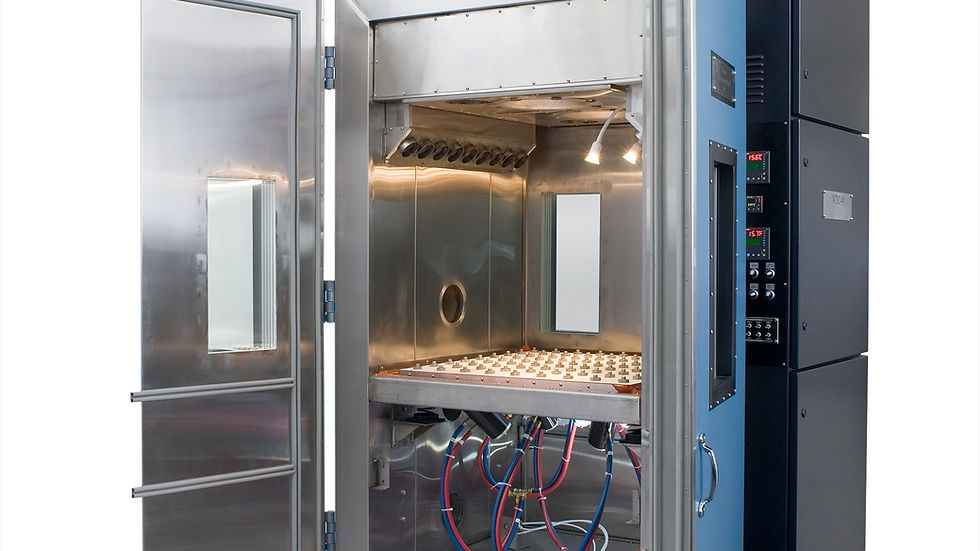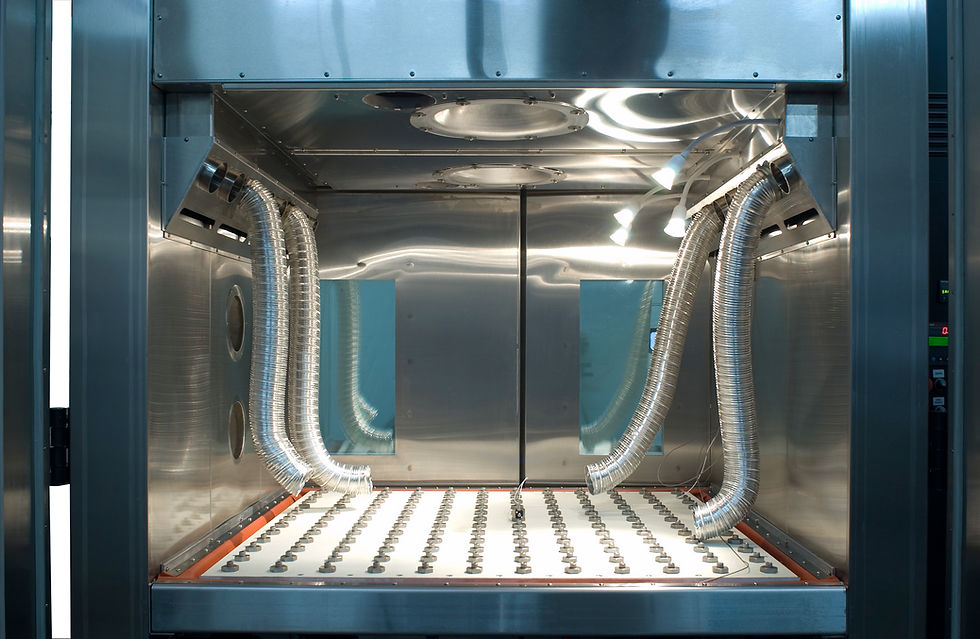Utilizing HALT and HASS: The Key to Developing Superior Products
- Mar 11
- 3 min read
Updated: May 31
Understanding how HALT and HASS Aid in Creating a Better Product
Creating a high-quality product requires rigorous testing. Understanding how HALT and HASS aid in creating a better product requires a grasp of these testing methods.
A Brief Overview of HALT and HASS
We'll start with a brief overview of each, followed by the main highlights:

HALT: Highly Accelerated Life Testing
HALT (Highly Accelerated Life Test): This method is used during product development. It detects early weaknesses by progressively increasing stress levels until the component fails. After this, weaker components are substituted with stronger ones. This process improves product reliability and helps predict an extended product lifespan.
HALT is performed during the prototyping (design) phase.
It is a crucial tool for predicting potential failures throughout the product’s life.
HALT helps identify the product's ultimate limits.
It effectively lowers warranty costs by detecting possible failures before they occur in the field.
HALT enhances understanding of the product’s behavior.
It’s most effective when multiple stresses are applied simultaneously, including temperature, vibration, and voltage.
HALT is also applicable during the R&D stages to identify design flaws.
Finally, HALT pushes a product to its failure point.
Benefits of HALT Testing
Pushing a product to its limits through testing provides numerous benefits. HALT testing uncovers design issues that might not surface in real-world conditions for years. For example, it can identify:
Exposed electrical connections prone to corrosion.
Mechanical supports that lack sufficient strength.
Switches that might malfunction under intense vibration in cold environments.
Through HALT testing, the engineering, QA, manufacturing, and program management teams can evaluate the results. They can integrate these findings into an updated design to address and remove flaws and weaknesses.

HASS: Highly Accelerated Stress Screening
HASS (Highly Accelerated Stress Screening) is a production screening method. It identifies and eliminates weak components or failures. HASS accelerates the real-world lifespan of a product by applying various stresses. These include temperature, vibration, and sometimes voltage and humidity. The main goal of HASS is to reveal latent defects introduced during manufacturing. These defects should have been identified and removed during the design phase's reliability enhancement testing.
HASS is conducted during the manufacturing (production) phase.
It involves a series of tests that can be applied to anywhere from 1% to 100% of outgoing products.
HASS minimizes failures in the field.
Products are subjected to conditions more extreme than those they would typically encounter in the field.
HASS serves as a comprehensive inspection process.
This method applies stresses that reveal flaws in the production process, such as cold solder joints and loose hardware.
HASS identifies these flaws in the shortest time possible.
It is a crucial indicator of reliability.
Financial Implications of HASS Testing
The expense and occurrence of product failures in the field can be very high. However, utilizing HASS enables manufacturers to detect failures before they happen. This proactive approach saves money, time, and reputation. Additionally, it decreases the number of faults that must be managed in the field.
In conclusion, both HALT and HASS are vital for ensuring product reliability. These testing methods not only enhance the development process but also significantly reduce risks associated with failures. Understanding and implementing these practices will lead to a more robust and dependable product.
Whether you're involved in R&D or manufacturing, embracing these testing techniques allows you to enhance your product's quality and reliability. By applying the insights gained from HALT and HASS, you can create a better product that satisfies customer needs and minimizes downtime in the market.
Ultimately, investing in HALT and HASS testing translates into a significant competitive advantage in today's fast-paced environment.
Do you want to learn more about how these methods can help your business? Check out this valuable resource: HALT and HASS Testing Guide.




